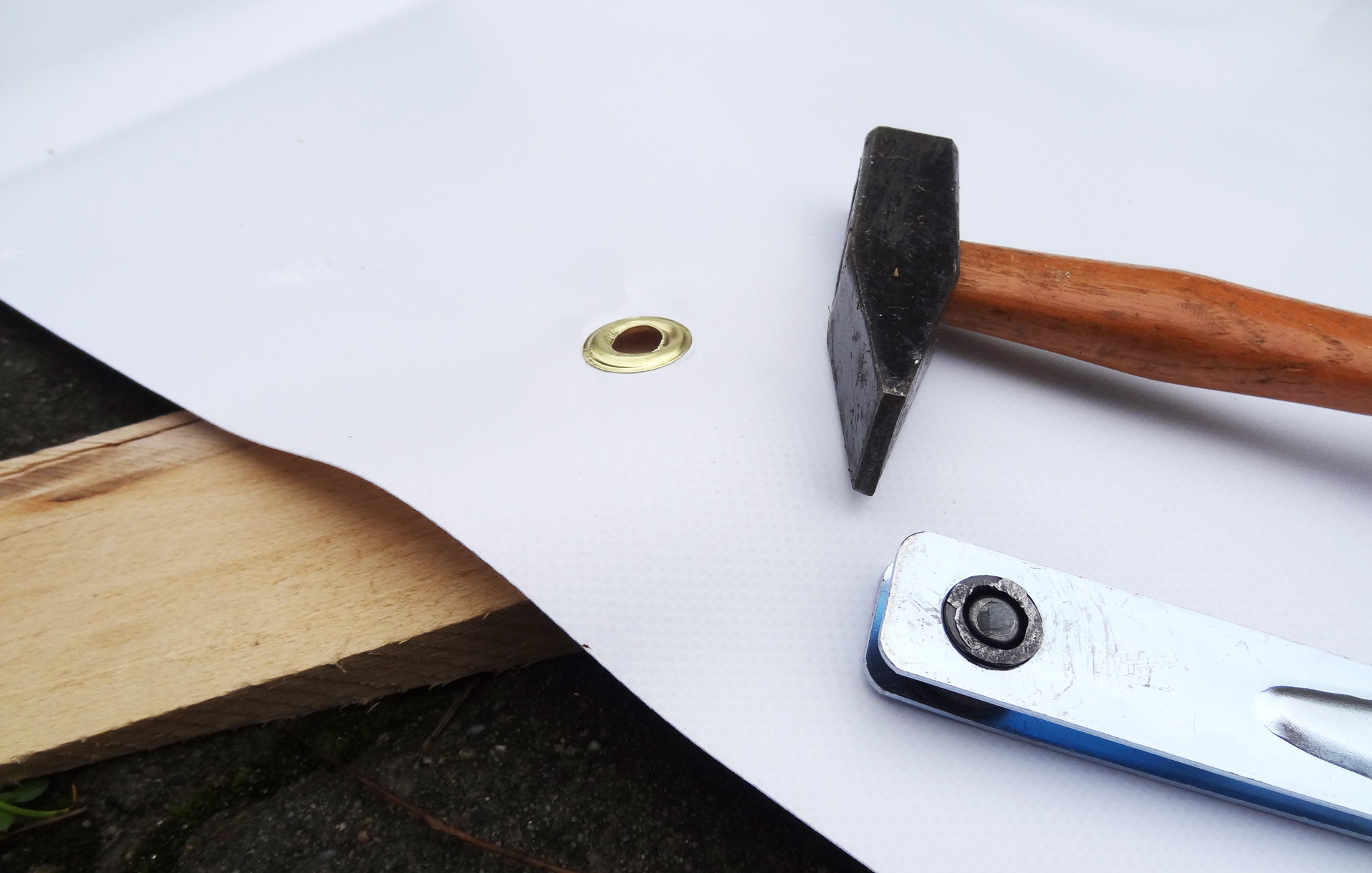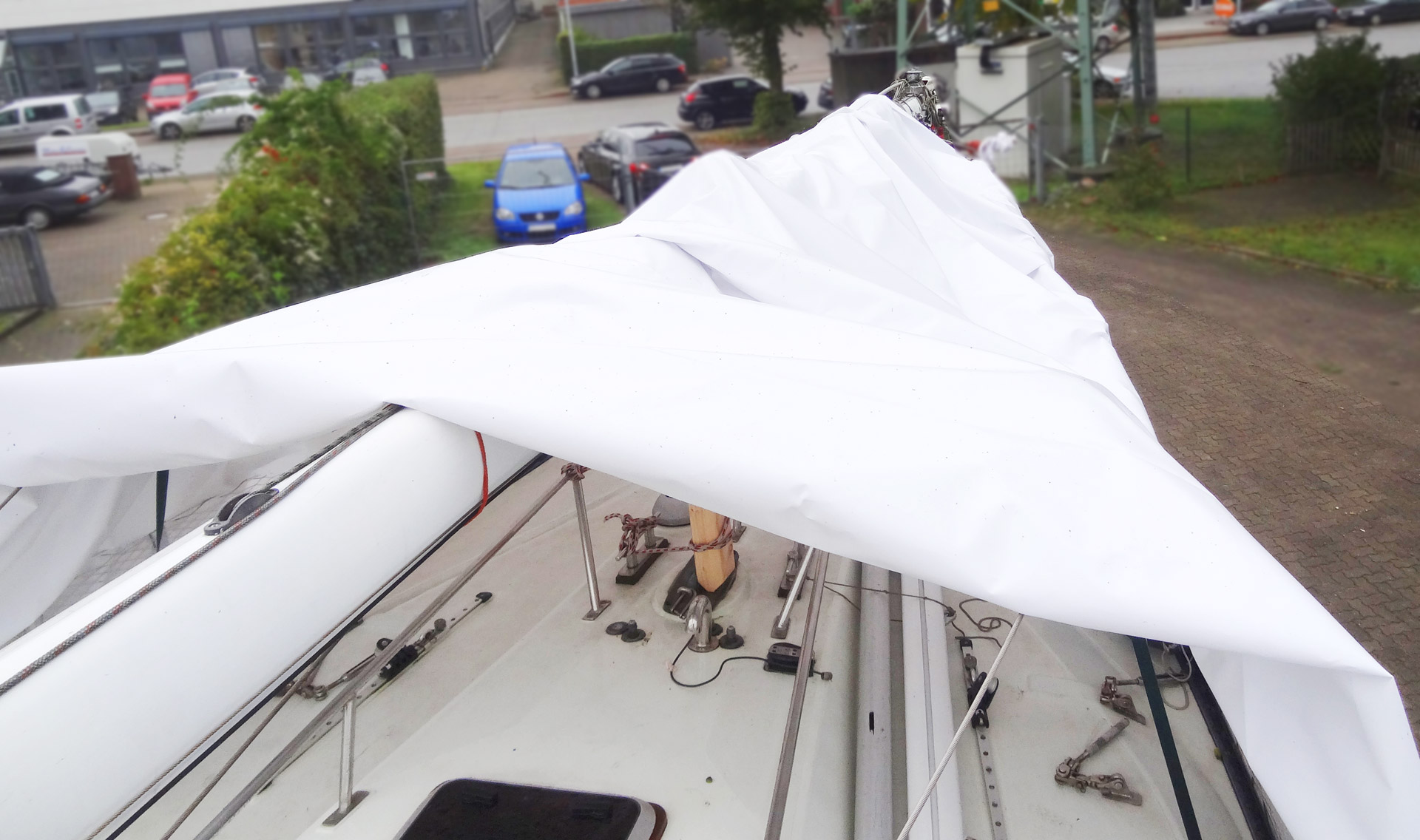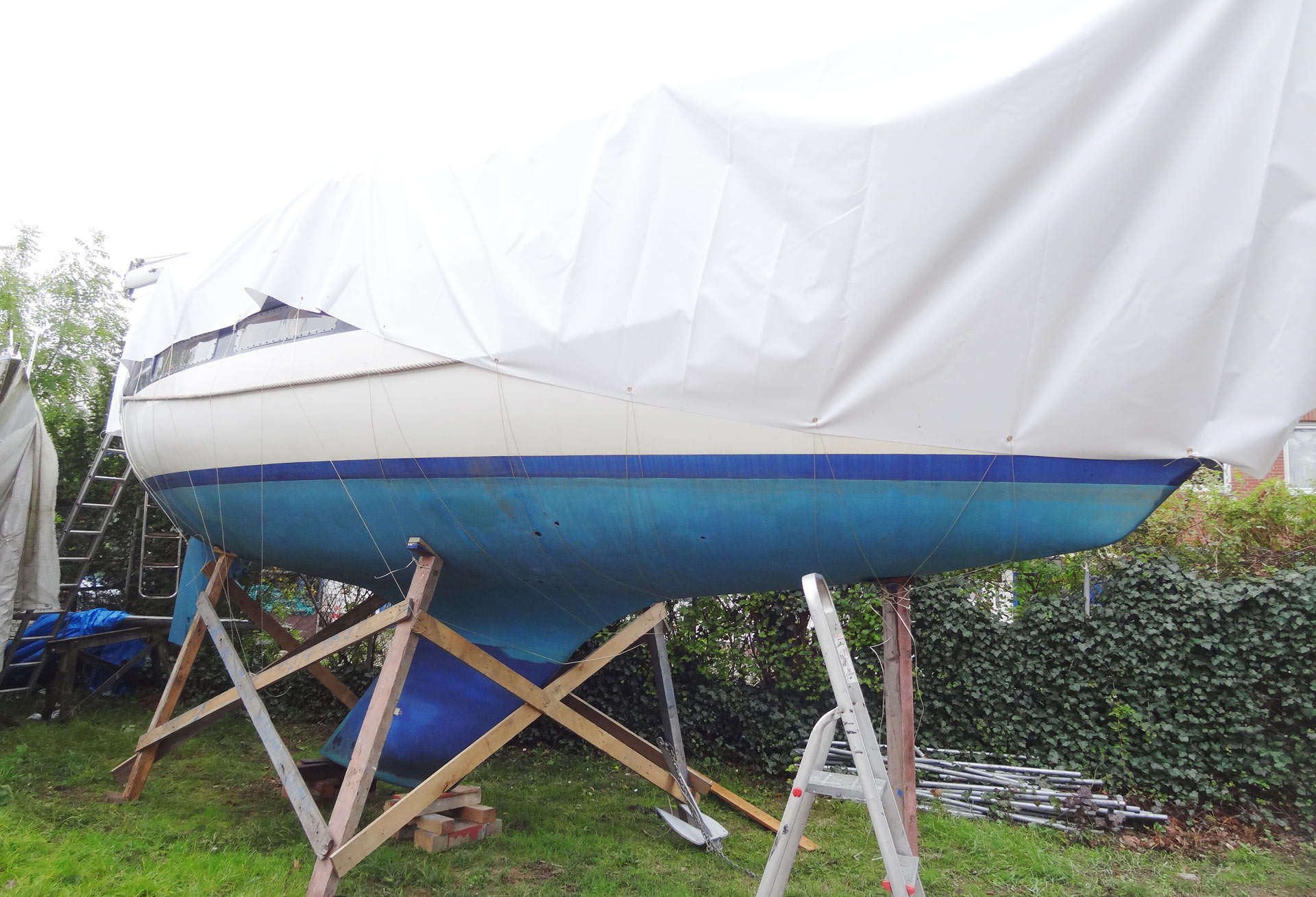Checking the available places to winter-store my yacht I was astonished how few there were – moreso, if marinas or wharfs still hat free stands to offer, how high the prices have got up. Finally I was lucky to grab one of the last places available in Hamburg, not too far away from where I live and at the same time not too far away from the sea. (You may read my article about craning & winter storage here). Paying some 800 Euros for a winter-season I found it a fair price, not to mention other offers I had got going as high as 1.200 Euros and more.
But there was a drop of bitterness after all: I only got a stand outside the hall and was lucky to grab one of the last. But it was clear to me that I´d have to get a cover for my boat soon: Winters in Hamburg are nasty.
Why buying a tarp for your yacht anyway?
Even if you are one of the yacht owners putting their boats inside a hall, you can expect a lot of dirty dusty in the air around your yacht. Other owners will do refitting-work der boats, will grind and paint and re-grind and re-paint. That produces a load of dust. Over time the fine but annoying powder will settle down on your precious teak-decks, will creep into the tiniest corners and slots. The solution: A tarpaulin.

When I was ready about to buy one, I had to find out that this was not an easy task, seeing the overwhelming variety of available types of tarps: You may get a custom-built tarp, you can buy a standard-cover depending on the length of your boat or – as it was later my case – you may buy all the parts needed and build your very own tarp.
Which type of tarp-buyer are you?
Which kind of tarp you buy will depend mainly on two factors: How much money are you willing to spend? And: Hoch strong should your yacht-cover be? First of all, if you can put your yacht inside a hull, the cheapest solution will do. If money is no problem and you want your yacht´s name and manufacturer´s logo stitched into the custom-coloured tarp, than you might seek a sailmaker to help you out.
In my case, I hadn´t have enough of both: I needed an extra-strong tarp for having my yacht outside in the weather and didn´t wanted to spend too much on “just” some squaremetres of watertight canvas.
Speaking of material properties: You should definitely look for a tarp that is made of waterpfoof material. PVC-fabric with internal gauze like the extra-heavy material used for truck-tarps suits best, I would say. The tarp should cover your boat from mast-shoe all the way aft to the mast-top and of course at least a third or fourth of the freeboard. I don´t think it´s necessary to cover all of the boat, though some people have tarps like that (except owners of wooden yachts).

The material should be strong if used outside: Remember, heavy winter-storms will twitch at your tarp trying to tear it apart. Even in light winds, the tarp constantly moves and has the tendency to (at least partially) rip. On the other hand: Don´t buy too heavy canvas since you won´t be able to apply the tarp alone anymore.
The pros and cons of a custom-built tarp.
Checking the services of several sailmakers here in Hamburg and the region I noticed that nearly all of them also had custom-tarps. Nice and very beautiful things, especially made just for you and your boat, these tarps are just luxurious.
The sailmaker will take exact measurements of your particular boat, will take into consideration the individual arrangements of how you positioned your mast on deck and can thus make a “tailor-made” suite for your boat. The sailmaker can even cut out entrance-doors with zippers and can apply big “pockets” or handles to the inside for stowing away tools and stuff.
That all comes with a price-tag. I checked for the cheapest ones beginning at 500 Euros and I have seen tarps coming in at prices of not less than 1.500 Euros. Well, nice handcrafted work and a piece of art when looking at it, but definitely nothing for me …
Buying a standard tarp.
Roaming all the nice cosy little maritime-shops I learned that the big trade chains like A.W. Niemeyer here in Germany offer a great variety of products to a far more reasonable price. Well, it´s a different discussion whether I should bring my money to a big chain or the small vendor, but what saw at A.W. Niemeyer astounded me: Tarps for winter-season in all sizes imaginable. Besides – to a very attractive price.

A tarp for my 33-feet cruiser measuring 10 x 6 or 12 x 8 metres – ready for instant usage with lugs every 50 centimetres – would come at 120 to 140 Euros. Plastic-Material of 260 grams per squaremetre is a fairly strong and could meet my demands. But is it waterproof?
Another version, more expensive, would be laminated to form a watertight cover for your boat, lugged for instant usage, tear-resistant, frost- and UV-proof. Here we are talking different price-tags now: Ranging from 210 to 340 Euros, this tarp will definitely be a better choice – and will stay so for many winter-seasons. But I still thought I can do better. And switched to eBay on my smartphone.
Why I built my own tarpaulin.
Seaching for “truck tarp extra strong” I instantly got many offers. Truck tarp, I thought, would be the strongest available material to meet my expectations: Waterproof, extremely resilient, UV- and reißfest and long-lasting, since I did not want to trade low-cost for longevity. Even if I´d safe some money by buying a cheap tarp – adding that price up for the upcoming years, even if I´d only have to buy every second season a new one, is a sum I am not willing to pay.

So I ordered extra strong truck tarp for 150 Euros measuring 10 x 5 metres. Long and eide enough to cover all of my yacht´s deck and some of her freeboard. Three days later a heavy-weight parcel arrived, after unpacking a white-shining tarp exposed. I was happy.
Ordering a lug-bat with some 60 lugs, I did had everything together needed to build my own tarpaulin for winter-storage.
Yacht-cover for winter storage: How to DIY
Finally building your own tarp is a matter of a few hours: You just unfold the canvas on the ground. Now take a small scissors (don´t tell your wife) and cut holes of 4 x 4 millimetres every 40 to 60 centimetres all around the sides of the tarp. Don´t put them too close to the edge since during a winterstorm there´s much strain on the tarp and the lug. Having some material around makes the combination of both stronger.
Now take a hammer and batter the lugs. That takes some trials if you had never done it before, but I found that after having hammered some 5 or 10 lugs I became pro in making nicely looking professional brazen lugs. After one hour or so the tarp was finished.

Hauling it on board (alone) was a strenuous effort but once the tarp was placed midship over the mast the rest was a no-brainer. Pulling the canvas all along the length of the mast, adjusting it to fit perfectly, I was working another hour to having it just in the right place.
Be aware: Soften all sharp edges of the boat, just like the spreaders and edges of the guardrail-piles to prevent them to work their way through the tarp since no matter how tight you apply it, it will constantly rub in the winds and storms. Best way to do so is to cut open tennis-balls to round out the edges (which is only an option if you want to afford buying some 10 or so balls), or cut heatingpipe-insulation to fix them atop the railing.

I used pieces of old denim, twisting und interlooping them to the reeling and thus scored the same effect.
All in all, it was half a workday of fun in the open air until my yacht was finally covered: Lashing the tarp tight with ordinary washing line (I bought an extra-strong version with steel-wires inside) to the hull, I´m convinced my construction meets my high expectations. Working inside my boat I like best the constant and evenly distributed white light, like the tarp was fluorescent. I also notice that even light sunshine is enough to heat up the inside like a little greenhouse.
The best is, the overall-price was not more than 160 Euros and I´m sure I am going to be proud of my work for a couple of upcoming winter-seasons as well.
What about your tarp for covering your boat during winter time? I am looking forward to your comments.
